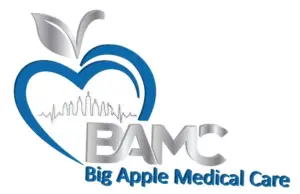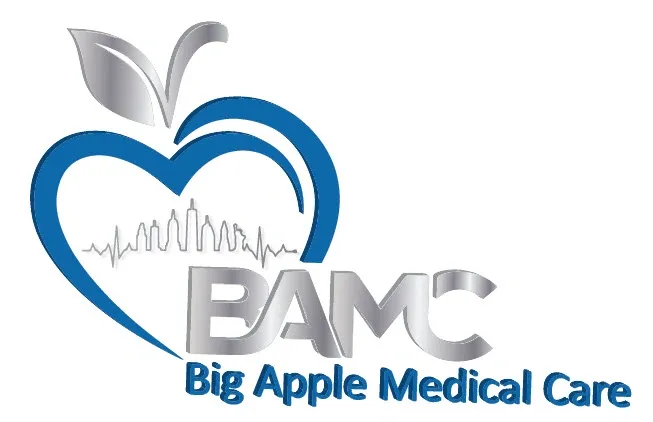Why Annual Health Screenings Should Be on Your Calendar

In today’s fast-paced world, preventive healthcare often takes a backseat to our busy schedules. Yet, making time for annual health screenings can be one of the most important decisions for long-term wellbeing. These regular check-ups serve as an early warning system, potentially identifying health concerns before they become serious problems.
Annual health screenings can detect conditions like high blood pressure, diabetes, and certain cancers at their earliest, most treatable stages. Research consistently shows that early detection leads to better outcomes and often less intensive treatments. For many conditions, the difference between catching them early versus late can literally be life-saving.
These screenings also provide valuable baseline data that healthcare providers can track over time, allowing them to spot concerning trends before they develop into clinical issues. By prioritizing these appointments, individuals take an active role in their healthcare journey rather than reacting to problems after they’ve developed.
The Importance Of Annual Health Screenings
Regular health screenings serve as a cornerstone of preventative healthcare, providing vital insights into one’s physical condition before symptoms appear. These assessments create a baseline for future comparisons and enable early intervention when abnormalities are detected.
Proactive Disease Detection
Annual screenings can identify health conditions in their earliest stages, often before symptoms become noticeable. Blood pressure checks may reveal hypertension before it causes heart damage. Blood tests can detect cholesterol abnormalities that increase stroke risk.
Cancer screenings like mammograms, colonoscopies, and skin checks can identify malignancies when they’re most treatable. A study in the Journal of Clinical Oncology found that regular screenings increased five-year survival rates by up to 30% for certain cancers.
Monitoring Overall Well-Being
Annual screenings provide a comprehensive snapshot of health status beyond specific disease detection. They track important metrics like weight, BMI, and vital signs over time.
These regular assessments allow healthcare providers to identify subtle trends that might otherwise go unnoticed. A slight but persistent increase in blood pressure or gradual weight gain may signal developing health issues.
Screenings also provide opportunities to discuss lifestyle factors affecting health. Conversations about nutrition, exercise habits, stress management, and sleep quality often occur during these visits.
Mental health assessments are increasingly incorporated into annual exams. Brief screenings for depression and anxiety can identify psychological concerns requiring attention, recognizing the important connection between mental and physical health.
Reducing Long-Term Healthcare Costs
A study in Health Affairs found that every $1 invested in preventive services saves $5.60 in future healthcare costs. This significant return occurs through avoiding expensive emergency care, hospitalizations, and intensive treatments for advanced conditions.
Insurance companies recognize this value, which is why most plans cover preventive screenings at little or no cost to patients. The Affordable Care Act mandates coverage for many preventive services without copayments or deductibles.
Beyond financial benefits, early detection minimizes productivity losses from extended illness. Fewer sick days and hospitalizations translate to maintained income and career advancement opportunities.
Key Components Of Comprehensive Check-Ups
Annual health screenings consist of several essential components that work together to provide a complete picture of your health status. These evaluations help identify potential issues before they become serious problems.
Physical Examinations
The foundation of any comprehensive check-up is a thorough physical examination. During this process, healthcare providers assess vital signs including blood pressure, heart rate, respiratory rate, and temperature. These measurements provide critical baseline information about overall health.
Doctors will perform visual inspections of various body parts including the skin, eyes, ears, and throat. They’ll use a stethoscope to listen to heart and lung function, checking for irregular heartbeats or breathing difficulties.
Laboratory Tests
Blood tests provide crucial information about organ function, disease markers, and nutritional status. Complete blood counts (CBCs) assess red and white blood cells and platelets, while comprehensive metabolic panels evaluate kidney and liver function.
Lipid panels measure cholesterol levels, including HDL, LDL, and triglycerides. These values help assess cardiovascular risk factors. Blood glucose tests screen for diabetes and prediabetes conditions.
Common Laboratory Tests:
- Complete Blood Count (CBC)
- Comprehensive Metabolic Panel (CMP)
- Lipid Panel
- Thyroid Function Tests
- Urinalysis
Urinalysis can detect kidney issues, diabetes, and urinary tract infections. Additional specialized tests may be recommended based on personal and family medical history or specific symptoms.
These laboratory assessments provide objective data that complement the physical examination findings. Together, they create a comprehensive health profile.
Screenings Tailored By Age And Gender
Health screening recommendations vary significantly based on age and gender. Women between 40-74 should undergo mammograms every 1-2 years to detect breast cancer early. Pap smears are recommended every 3-5 years for cervical cancer screening.
Men over 50 should discuss prostate cancer screening options with their doctor. PSA blood tests and digital rectal exams are common screening methods.
How Regular Screenings Support Preventive Care
Regular health screenings serve as the foundation of effective preventive care, helping to detect potential health issues before they develop into serious conditions. These routine examinations provide valuable data points that healthcare providers can use to develop personalized health plans.
Identifying Risk Factors Early
Health screenings are designed to detect risk factors and early signs of disease when treatment is most effective. Blood pressure checks, cholesterol tests, and blood glucose measurements can reveal cardiovascular and metabolic risks before symptoms appear.
Key screenings by age group:
- Ages 20-39: Blood pressure, cholesterol, skin checks
- Ages 40-49: Adds mammograms, diabetes screening
- Ages 50+: Adds colonoscopy, bone density tests
Family history often influences individual risk profiles. Healthcare providers can adjust screening schedules based on genetic factors, helping patients with hereditary predispositions receive more targeted monitoring.
Enabling Timely Medical Interventions
Early interventions typically require less intensive treatments. For example, addressing high blood pressure through lifestyle changes and medication can prevent strokes and heart attacks that would require emergency care.
Screenings create opportunities for patient education. During these appointments, healthcare providers can discuss risk factors and recommend lifestyle modifications to improve overall health outcomes.
Cost-benefit analysis shows:
- Prevention costs significantly less than treatment
- Early interventions reduce hospitalization rates by 25-40%
- Regular screenings decrease emergency room visits by 15-30%
Continuous monitoring through screenings also helps evaluate the effectiveness of ongoing treatments, allowing for timely adjustments to medication or therapy protocols as needed.
Overcoming Barriers To Scheduling Annual Screenings
Many people face obstacles when trying to maintain regular health screenings, but these challenges can be addressed with practical solutions and accurate information. Understanding the true value of preventive care helps prioritize these important appointments.
Addressing Common Misconceptions
Many individuals avoid annual screenings due to the misconception that they’re only necessary when symptoms appear. This reactive approach can lead to missed opportunities for early detection and prevention.
Research shows that early detection through regular screenings significantly improves treatment outcomes for many conditions. For example, colonoscopies can prevent colon cancer by removing precancerous polyps before they develop into cancer.
Navigating Insurance And Cost Concerns
Financial concerns represent a significant barrier to regular health screenings. Many people don’t realize that most insurance plans cover preventive screenings at 100% with no out-of-pocket costs.
The Affordable Care Act requires insurance companies to cover many preventive services without charging a copayment or coinsurance. These include:
- Blood pressure screenings
- Cholesterol screenings
- Colorectal cancer screenings
- Mammograms
- Cervical cancer screenings
For those without insurance, community health centers offer sliding-scale fees based on income. Many hospitals and clinics also provide screening events with free or reduced-cost services throughout the year.
Integrating Health Screenings Into Your Yearly Routine
Incorporating regular health screenings into your annual schedule requires thoughtful planning and coordination. These preventive measures work best when integrated seamlessly with existing routines and other wellness activities.
Setting Calendar Reminders
Digital tools offer effective ways to track health screening appointments. Most smartphones and email applications include calendar features that allow for annual recurring reminders with customizable alert settings.
Effective reminder strategies:
- Set alerts 3 months, 1 month, and 1 week before due dates
- Include specific details like doctor contact information and required preparation
- Use color coding to distinguish between different screening types
Coordinating With Other Wellness Activities
Health screenings become more sustainable when paired with existing wellness routines. Physical examinations can be scheduled near fitness assessments or seasonal sports physicals to create a comprehensive wellness checkpoint.
Many employers offer annual wellness programs that include screening opportunities. These workplace initiatives often provide incentives like reduced insurance premiums or health savings account contributions.
Effective coordination opportunities:
- Combine dental cleanings with oral cancer screenings
- Schedule vision tests alongside general physical examinations
- Align skin cancer screenings with seasonal wardrobe changes
Community health fairs frequently offer multiple screening services in one location. These events typically occur at consistent times each year and provide convenient access to blood pressure checks, diabetes screenings, and other preventive services.
Frequently Asked Questions
Many people have questions about health screenings and how they apply to their specific circumstances. Understanding which screenings are appropriate based on age, gender, and risk factors can help individuals make informed decisions about their preventive care.
What health screenings are recommended for different age groups?
In your 20s and 30s, basic screenings include blood pressure, cholesterol, and diabetes testing every 1-3 years. Women should begin cervical cancer screening at age 21.
For adults in their 40s and 50s, recommended screenings expand to include mammograms for women and colorectal cancer screening for everyone starting at age 45.
Those 60 and older should continue previous screenings while adding bone density tests, especially for women after menopause. Prostate cancer screening becomes important for men in this age group.
How does gender affect recommended health screenings?
Women require specific screenings including mammograms, Pap tests, and HPV testing to detect breast and cervical cancers. After menopause, bone density scans become important to assess osteoporosis risk.
Men should undergo prostate examinations starting around age 50, with earlier screening for those at higher risk. Testicular exams are also recommended for younger men.
Both genders need heart health screenings, but women may require different interpretation of results as heart disease can present differently in females.
Which health screenings are considered essential for adults?
Blood pressure monitoring is crucial for all adults, as hypertension often develops without symptoms. Annual checks can catch problems early.
Cholesterol screening helps assess cardiovascular health and should begin by age 20, with frequency based on initial results and risk factors.
Diabetes screening through fasting blood glucose or A1C tests is essential, particularly for those with risk factors like family history or obesity.
Can you list the types of tests typically included in an annual health screening?
Physical measurements include height, weight, BMI calculation, and waist circumference to assess overall health and metabolic risk factors.
Blood tests typically cover complete blood count, comprehensive metabolic panel, lipid profile, and thyroid function. These provide insights into organ function and disease risk.
Urinalysis can detect kidney issues, diabetes, and infections, while serving as a non-invasive screening tool for multiple conditions.
Why is it important to participate in routine health screenings?
Early detection significantly improves treatment outcomes for many conditions, particularly cancers and cardiovascular disease. Many serious conditions show no symptoms until advanced stages.
Preventive screenings can identify risk factors before disease development, allowing for lifestyle modifications or medications that may prevent illness entirely.
How frequently should one undergo health screenings, and does it vary by age or risk factor?
Screening frequency varies significantly based on personal risk factors, including family history, lifestyle, and pre-existing conditions. High-risk individuals may need more frequent monitoring.
Age plays a crucial role in determining screening schedules. As people age, the recommended frequency of many screenings increases.






